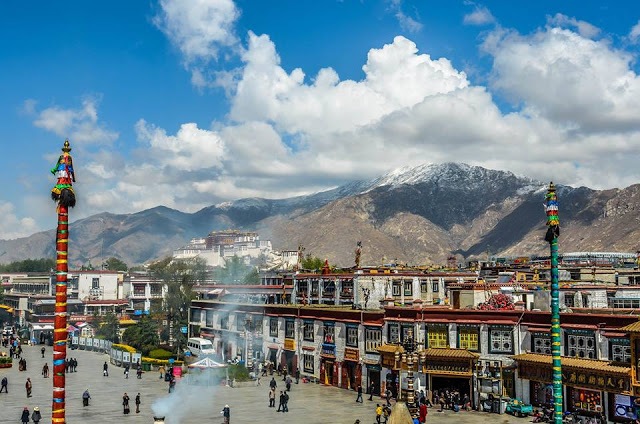
(TibetanReview.net, Apr19, 2016) – China is to eliminate, at least on paper, rural poverty in Tibet Autonomous Region (TAR) by 2020, the end of its current Five-Year Plan period, while bringing down overall regional poverty rate to 5%, reported China’s online Tibet news service eng.tibet.cn Apr 14. Despite decades of a much-touted double-digit annual growth, the region continues to remain the poorest in the People’s Republic of China.
“In order to be victorious in the war on poverty, in parallel with implementation nationwide of comprehensive better-off society, the Tibet Autonomous Region Party Committee and government have indicated that during the 13th Five-Year plan they will standardly implement and guarantee total alleviation of poverty for 590,000 people,” the report said.
What this meant, the report said, was “total alleviation of poverty for the countryside population, the total ridding of impoverished counties and furthermore total alleviation of regional poverty, thereby bringing poverty rates down to below 5%.” It added that “the impoverished population will experience a 16% or higher growth in annual income.”
The report claimed that during the 12th Five-Year Plan period, 580,000 Tibetans were raised above the poverty line with plans such as “special aid-to-poor projects, industry aid-to-poor projects, social aid-to-poor projects, the Tibet-Aid projects, industry aid-to-poor projects and other aid-to-poor models.”
The report added that during the current, 13th Five-Year plan period, the TAR government will “intensify aid-to-poor, and through improving of assault institutions, implementing aid-to-poor measures, and planning as a whole to phase out aid-to-poor, and implementing measures to develop an accountability system for aid-to-poor goal management, the creation of a large aid-to-poor scheme, and implementing poverty alleviation for the entire population while also assuring three basic things for the poor population (ample food, water and shelter), and the three must haves (having skills, having work and having money to spend), and the three guarantees (protocol education, basic health-care and social assurance).”
Over 80 percent of Tibetans live in rural areas whereas the region’s urban sprawls are dominated by Chinese immigrants who have benefited from all the favourable and preferential policies that China had implemented over the decades to ensure the region’s leapfrog development and speedy integration with China.


